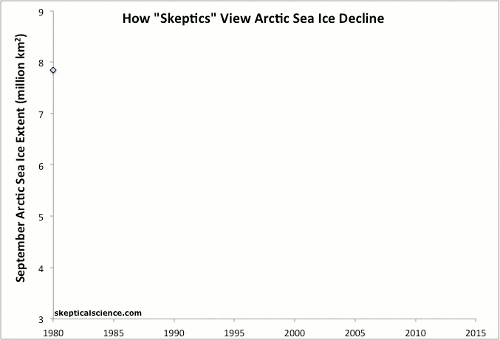- Thread starter
- #21
The OP is about the 21% increase in Arctic ice this year. Posting 2012 information is pointless. Stop living in the past and embrace the present.The idiotic anti-science OP was debunked.
In the real world.....this is what the "experts" are actually saying....
Arctic nearly free of summer sea ice during first half of 21st century
NOAA
April 12, 2013
For scientists studying summer sea ice in the Arctic, its not a question of "if" there will be nearly ice-free summers, but "when". And two scientists say that "when" is sooner than many thought -- before 2050 and possibly within the next decade or two.

Arctic sea ice. - (Credit: NOAA)
James Overland of NOAAs Pacific Marine Environmental Laboratory and Muyin Wang of the NOAA Joint Institute for the Study of Atmosphere and Ocean at the University of Washington, looked at three methods of predicting when the Arctic will be nearly ice free in the summer. The work was published recently onlinein the American Geophysical Union publication Geophysical Research Letters.
"Rapid Arctic sea ice loss is probably the most visible indicator of global climate change; it leads to shifts in ecosystems and economic access, and potentially impacts weather throughout the northern hemisphere," said Overland. "Increased physical understanding of rapid Arctic climate shifts and improved models are needed that give a more detailed picture and timing of what to expect so we can better prepare and adapt to such changes. Early loss of Arctic sea ice gives immediacy to the issue of climate change."
"There is no one perfect way to predict summer sea ice loss in the Arctic," said Wang. "So we looked at three approaches that result in widely different dates, but all three suggest nearly sea ice-free summers in the Arctic before the middle of this century."

NOAA scientists explore the Arctic during a 2005 mission. - (Credit: NOAA)
Overland and Wang emphasized that the term "nearly" ice free is important as some sea ice is expected to remain north of the Canadian Archipelago and Greenland.
● The "trendsetters" approach uses observed sea ice trends. These data show that the total amount of sea ice decreased rapidly over the previous decade. Using those trends, this approach extrapolates to a nearly sea ice-free Arctic by 2020.
● The "stochasters" approach is based on assuming future multiple, but random in time, large sea ice loss events such as those that occurred in 2007 and 2012. This method estimates it would take several more events to reach a nearly sea ice-free state in the summer. Using the likelihood of such events, this approach suggests a nearly sea ice-free Arctic by about 2030 but with large uncertainty in timing.
● The "modelers" approach is based on using the large collection of global climate model results to predict atmosphere, ocean, land, and sea ice conditions over time. These models show the earliest possible loss of sea ice to be around 2040 as greenhouse gas concentrations increase and the Arctic warms. But the median timing of sea ice loss in these models is closer to 2060. There are several reasons to consider that this median timing of sea ice loss in these models may be too slow.
"Some people may interpret this to mean that models are not useful. Quite the opposite," said Overland. "Models are based on chemical and physical climate processes and we need better models for the Arctic as the importance of that region continues to grow.
Taken together, the range among the multiple approaches still suggests that it is very likely that the timing for future sea ice loss will be within the first half of the 21st century, with a possibility of major loss within a decade or two.




